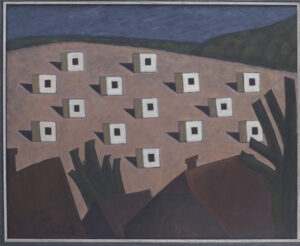Visual culture and art history are intimately entangled with the violence of colonization and Transatlantic Slavery. We must consider the lasting impact the re-presentation of such violence has on its viewers. To not is to be irresponsible. Images have the potential to perpetuate racist and colonial ideologies. When contending with such harmful content, considering critical care is paramount for scholars, writers, curators and art historians. The 2019 conference “Reparative Frames: Visual Culture After Reconciliation” brought together researchers and academics with similar and shared approaches to content development and delivery, one that centers a trauma-informed way of presenting the important topics of decolonization and reconciliation.
When addressing the violent ways racialized people are represented in art history and visual culture, critical care is an essential framework to realize, recognize, respond to and resist re-traumatization.
By starting with “placing care around” the recipient, the viewer, the audience member, the community member, and others scholars can minimize and potentially prevent re-traumatization in the discussion of difficult histories.[1] Curator, art historian and professor Joana Joachim continues: “The notion of care, or of ‘showing up,’ as articulated by art critic and writer Jessica Lynne, can be mobilized as praxis here.”[2] Critical care, then, calls on the academic researcher, the curator, the cultural worker, the art educator, and others to radically reimagine how and why content is delivered.
The importance of such a preoccupation is crystallized in questions Kimberly Juanita Brown asks when considering racialized representations of Black figures: “What is it we want black bodies to illuminate for us photographically? And why do we ask in such visually violent ways?”[3] It is, as Saidiya Hartman reminds us, “much too late for the accounts of death to prevent other deaths, it is much too early for such scenes of death to halt other crimes.”[4] Rather than marshall artworks and visual culture that graphically evidence and aestheticize racialized violence, the critical care approach practiced in many of the conference talks preemptively prevented vicarious and second-hand harm to the conference attendees, many of who identify as Black, Indigenous or People of Colour. By building trauma-informed critical care into these conference talks, the presenters actively aligned their anti-racist intentions with their approach – in other words, these talks did not replicate the violence it sought to denounce. Rather, the “Reparative Frames: Visual Culture After Reconciliation” presenters purposefully refused the violence by countering it with critical care.
Notes
[1] Jessica Lynne, “Criticism is Not Static: A black feminist perspective,” in other words, August 29, 2019, https://www.artagencypartners.com/hidden-narratives/ (as cited in Joana Joachim, “Curating, Criticism and ‘Showing up’ as Praxis,” C Magazine 145 [2020], 18).
[2] Joachim, “Curating, Criticism and ‘Showing up’ as Praxis,” 18–21.
[3] Kimberly Juanita Brown, The Repeating Body: Slavery’s Visual Resonance in the Contemporary (Durham, NC: Duke University Press, 2015).
[4] Saidiya Hartman, “Venus in Two Acts,” Small Axe 12, no.2 (2008): 1-14. See also: Eve Tuck, “Suspending Damage: A Letter to Communities,” Harvard Educational Review 79, no.3 (2009): 409–540.
About the author
Raven Spiratos obtained her Masters in Art History and Communications from McGill University (supervised by Dr. Charmaine A. Nelson). Her SSRC-funded thesis analyzed the representations of Black Canadians of African, African-European and Afro-Indigenous heritage from the nineteenth century until the present. Spiratos is currently an independent curator developing an exhibition with Armando Perla for the City of Toronto, “Transforming Grief: Loss and Togetherness in COVID-19” at Fort York, forthcoming March 2023.





